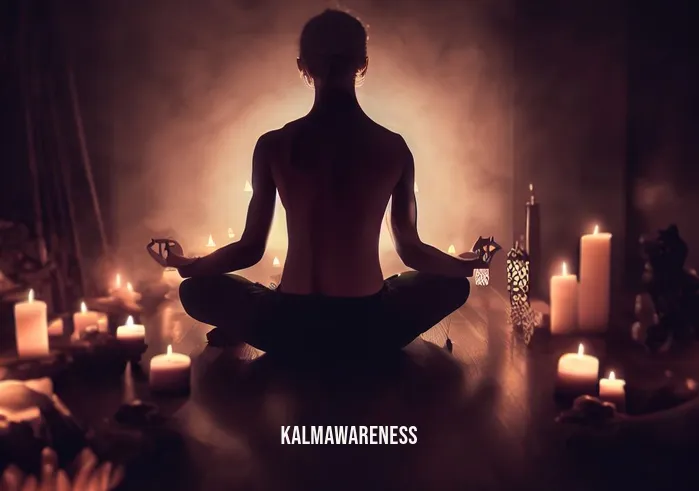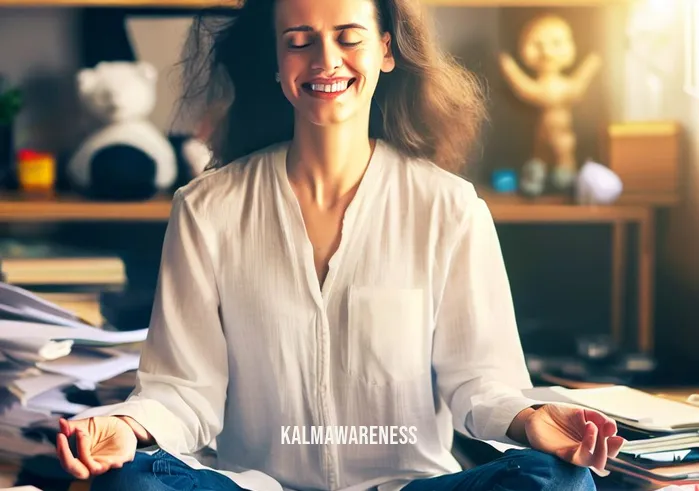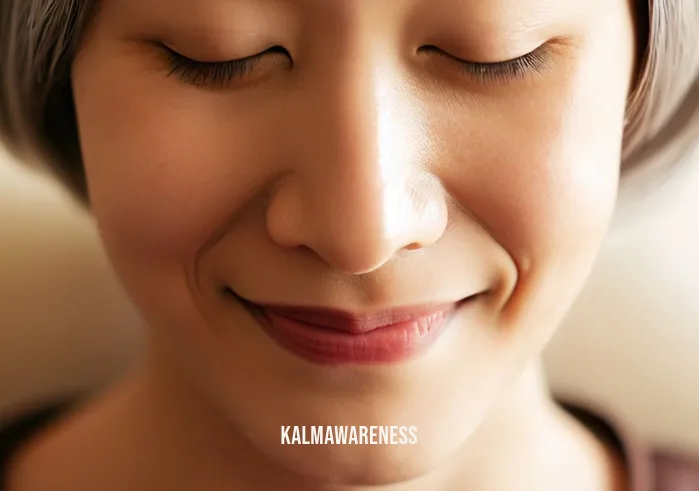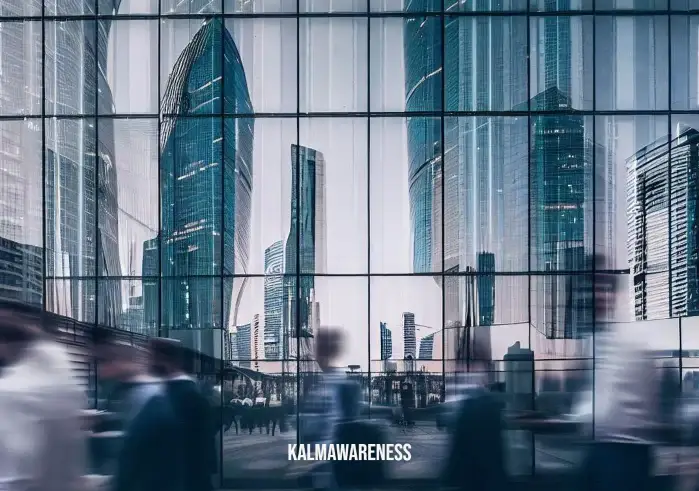Meditation for Disorders: An Exploration into Healing
In today’s fast-paced world, the importance of mental and emotional well-being has never been more profound. Among the myriad approaches to mental health and self-improvement, meditation for disorders stands out as a powerful and holistic tool. Rooted in ancient traditions, and augmented by modern scientific understanding, meditation offers a transformative experience. This article aims to shed light on its various facets, especially in relation to categories like Mindfulness, Self-Awareness, Emotional Eating, Body Image, and Recovery. Through the lens of Breathing and Meditation, we will understand how this practice can become an integral part of one’s healing journey.
The Essence of Mindfulness and Meditation
At its core, meditation involves attaining a peaceful state of mind in which thoughts are not occupied by worry. This process allows one to observe their thoughts and emotions without judgment, a concept explored in-depth in the judgement of the wise. However, the question many pose is: can u meditate lying down, or is a particular posture necessary? In truth, the essence of meditation transcends the physical realm—it’s the mental state that counts.
The Role of Self-Awareness in Recovery
An introspective journey often begins with a spark of self-awareness. When dealing with disorders, especially those related to body image or emotional eating, understanding the “self” is paramount. The practice of mirror gazing and its spiritual benefits can be an excellent starting point. It’s a process that aids individuals in confronting their deepest fears, insecurities, and aspirations. Moreover, techniques such as mindful hypnobirthing have shown immense promise in helping individuals connect with their innate strength during challenging times.
Emotional Eating, Body Image, and the Path to Self-Love
Disorders related to body image and emotional eating are not merely physical or dietary challenges. They are deeply rooted in one’s psyche and emotional landscape. Delving into how we get deep so fast, it becomes evident that the relationship between our mind, body, and food is intricate. This is where meditation, combined with mindful movement for sleep, can play a pivotal role in redefining this relationship.
A Multifaceted Approach: Techniques and Traditions
Meditation, despite its universal appeal, is not a one-size-fits-all solution. There are various techniques, each with its unique benefits. For instance, Jack Kornfield’s meditation for beginners offers a simplified approach for those just starting on their journey. On the other hand, some might find solace in rouse yoga, a blend of meditation and physical movement, or in practices that emphasize sustainable self-care. The element of some meditation exercises lies in their adaptability, enabling individuals to tailor them according to their needs.
Setting the Stage for a Transformative Journey
Meditation for disorders is not just about finding peace; it’s about transformation. It’s about empowering oneself to train your mind to be stronger than your feelings. With resources like meditation made simple and practices that instill gratitude meditation for sleep, one can embark on a journey of self-discovery and healing.
In conclusion, the realm of meditation for disorders is vast and varied. From understanding the nuances of mindfulness to exploring techniques tailored for specific challenges, there’s a lot to uncover. As we delve deeper into this topic in the next chapter, we’ll further explore the transformative power of meditation, ensuring a comprehensive and satisfying experience for every reader. Stay tuned, and let’s continue this enlightening journey together.

Meditation for Disorders: Techniques and Therapeutic Approaches
As we delve deeper into the realm of meditation for disorders, it’s imperative to understand the myriad of techniques available and how they can cater to individual needs. With an extensive range of practices, each harnessing a unique approach, meditation offers therapeutic avenues for a multitude of challenges. This chapter aims to provide an in-depth exploration of some specific methods and their potential benefits.
Advanced Meditation Techniques for Healing
Expanding beyond basic mindfulness, advanced meditation techniques offer specialized avenues for healing:
Transcendental Meditation (TM): Rooted in ancient Vedic traditions, TM involves silently repeating a mantra to facilitate a deep state of rest. It is particularly beneficial for those dealing with anxiety and chronic stress.
Body Scan Meditation: A practice that promotes heightened bodily awareness, often explored in techniques such as touch that body part, enabling individuals to identify and release tension.
Guided Imagery: Leveraging the power of visualization, this method involves immersing oneself in peaceful scenarios. Often recommended for trauma recovery and pain management.
Loving-Kindness Meditation (Metta): Rooted in compassion, this method encourages practitioners to send out love and good wishes to themselves and others. It’s particularly beneficial for those battling self-esteem issues or feelings of isolation.
Zen Meditation (Zazen): A form of seated meditation focused on observing the thoughts and sensations without attachment. Often explored in the context of teenagers walking, highlighting the importance of movement and grounding.
Harnessing the Synergy of Movement and Stillness
It’s no secret that meditation and movement often go hand in hand. Techniques such as rouse yoga exemplify the union of these two realms. The rhythmic flow of yoga poses, combined with focused breathing, can be profoundly therapeutic, especially when aligned with the intent of healing disorders.
Comparing Meditation Techniques: An Overview
To provide a clear perspective on various techniques, let’s delve into a table that contrasts their main features:
| Technique | Primary Focus | Benefits |
|---|---|---|
| Transcendental Meditation | Deep Rest & Relaxation | Reduces anxiety, Enhances well-being |
| Body Scan Meditation | Bodily Awareness | Relieves tension, Enhances body-mind connection |
| Guided Imagery | Visualization | Aids trauma recovery, Alleviates pain |
| Loving-Kindness Meditation | Compassion & Self-love | Boosts self-esteem, Reduces feelings of isolation |
| Zen Meditation | Thought Observation | Enhances mindfulness, Cultivates inner peace |
Venturing into Specialized Approaches
While generic meditation practices offer significant benefits, certain disorders require a more tailored approach. For instance, the method of pretty soon meaning emphasizes the importance of patience and gradual progress in one’s meditation journey. On the other hand, keep in mind definition focuses on the intentional setting of positive affirmations, especially beneficial for those battling depressive thoughts.
The journey of meditation is also about finding what resonates with the individual. Hence, it’s encouraged to experiment with various techniques, guided by experts or reliable sources like one for each blessed day, which offers daily meditation prompts to maintain consistency.
Looking Ahead: Expanding Horizons
Having gained a deeper understanding of meditation techniques and their therapeutic potential, it’s evident that this realm is expansive and rich with possibilities. However, the effectiveness of meditation for disorders also lies in consistent practice, guided learning, and a genuine commitment to self-growth.
In the next chapter, we’ll venture into the practical aspects of incorporating meditation into daily life, explore potential challenges, and offer solutions to enhance the practice’s efficacy. Dive deeper with us as we continue this enlightening journey together.

Meditation for Disorders: Stories of Hope and Triumph
Meditation’s transformative power is undeniable. But when it intertwines with the stories of those who have faced and conquered their disorders through its practice, it becomes a beacon of hope. This chapter dives into heartwarming narratives and profound quotes that highlight the resilience of the human spirit, emphasizing the hope that meditation for disorders brings to countless lives.
Real-Life Narratives: Triumph Over Turmoil
1. Sarah’s Journey with PTSD: Post her stint in the military, Sarah battled nightmares and triggers that crippled her daily life. It was how to spell stabilize that introduced her to meditation. She started with just 5 minutes daily and eventually found solace in practices like mirror gazing’s spiritual benefits. Today, she facilitates meditation workshops for veterans, offering them tools to find inner peace.
2. Miguel’s Conquest over Emotional Eating: Growing up in a tumultuous household, Miguel often turned to food for comfort. However, when he stumbled upon the concept of sustainable self-care, he discovered meditation as a means to confront his emotional turbulence. He now runs a support group, integrating meditation practices to aid others on a similar journey.
3. Ananya’s Battle with Body Dysmorphia: A talented ballet dancer, Ananya always felt her body was never ‘perfect’ enough. The practice of judgment of the wise introduced her to mindfulness, teaching her self-acceptance and self-love. She’s now an advocate for body positivity within the dance community.
Pearls of Wisdom: Quotes that Inspire
“In the midst of winter, I found there was, within me, an invincible summer.” — Albert Camus. This profound thought aligns with the essence of meditation, emphasizing the strength within, waiting to be discovered.
“What lies behind us and what lies before us are tiny matters compared to what lies within us.” — Ralph Waldo Emerson. A testament to the power of introspection that meditation fosters, encouraging one to explore the vast universe within.
“Healing doesn’t mean the damage never existed. It means the damage no longer controls our lives.” — Akshay Dubey. Resonating with the countless stories of individuals like Sarah, Miguel, and Ananya, this quote underlines the essence of recovery and the liberating power of meditation.
Embracing Meditation: A Beacon in the Darkness
For many, meditation is not just a practice; it’s a lifeline. When Rebecca, battling severe depression, found herself at a crossroads, it was the simple act of gratitude meditation before sleep that brought her solace. Such practices, often deemed simple, hold the power to turn one’s life around, serving as a reminder of the immense strength and resilience that reside within each of us.
Marching Forward: A Glimpse into the Future
The tales of triumph, coupled with profound wisdom, paint a vivid picture of hope. They highlight the transformative potential of meditation for disorders. As the global community becomes increasingly aware of mental health’s significance, practices like meditation emerge as pivotal tools in the wellness toolkit.
In the next chapter, we’ll focus on integrating meditation into one’s daily routine, exploring practical tips, and addressing potential challenges. With a blend of theory and actionable insights, we aim to empower you to harness meditation’s full potential. Join us as we continue this enlightening expedition.

Meditation for Disorders: Demystifying the Practice
Understanding meditation for disorders is pivotal for its effective implementation. While the transformative tales and quotes in previous chapters inspire, it’s the actionable knowledge that empowers individuals to tread this path confidently. This chapter aims to dissect the complexities of meditation, breaking it down into digestible nuggets of wisdom, ensuring that the reader gains a comprehensive grasp of the practice.
Fundamental Pillars of Meditation
For a successful meditative journey, understanding its foundational principles is crucial:
Focus: Central to any meditation technique, maintaining focus, whether on breath, mantra, or visualization, is vital. Techniques such as those emphasized in element of some meditation exercises can aid in enhancing this focus.
Consistency: Just like any skill, meditation requires regular practice. Whether it’s a few minutes daily or extended sessions weekly, what matters is the regularity.
Environment: A calm and quiet space, devoid of distractions, significantly enhances the meditation experience.
Open-mindedness: As highlighted by jack kornfield meditation for beginners, approaching meditation without preconceived notions or rigid expectations is essential.
Disorders and Their Corresponding Meditation Techniques
Different disorders often require varied meditation approaches for optimal benefits:
Anxiety Disorders:
- Breath-focused meditation: Helps calm the nervous system.
- Guided imagery: Eases the mind by redirecting focus.
Eating Disorders:
- Mindful eating practices: Encourage a healthier relationship with food.
- Body scan meditation: Enhances body awareness and acceptance.
Mood Disorders (like Depression):
- Loving-kindness meditation: Boosts self-worth and combats feelings of isolation.
- Gratitude meditation: Redirects focus on positive aspects of life.
Trauma and PTSD:
- Grounding techniques: Help anchor the individual in the present moment.
- Mirror gazing spiritual benefits: Aids in reconnecting with oneself post-trauma.
Obsessive-Compulsive Disorder (OCD):
- Mindfulness practices: Help in detaching from intrusive thoughts.
- Mantra repetition: Redirects mind from obsessive patterns.
Tips for Enhancing the Meditative Experience
While the basics provide a foundation, these additional tips can enhance one’s meditation journey:
Using Props: Cushions, blankets, or even meditation apps can augment the experience.
Journaling: Post-meditation, jotting down insights or experiences can offer clarity and track progress.
Joining a Group: Communities, whether online like one for each blessed day or offline, provide support and collective energy.
Seeking Guidance: Initially, guided meditations or sessions with experts can be highly beneficial.
Common Misconceptions Debunked
Meditation, despite its growing popularity, is often shrouded in misconceptions:
“I need to clear my mind entirely.” In reality, meditation is more about observing thoughts than eliminating them.
“It’s a time-consuming practice.” Even a few minutes, when practiced consistently, can yield benefits.
“Meditation is religious.” While rooted in spiritual traditions, modern meditation is largely secular.
“I’m not doing it right.” There’s no one-size-fits-all. What matters is the journey and personal experience.
Preparing for the Journey Ahead
Armed with this detailed understanding, the path of meditation for disorders becomes less daunting. The intricate dance of focus, consistency, techniques, and self-awareness takes center stage, preparing individuals to embark on this transformative journey.
In the concluding chapter, we will explore the broader implications of meditation in the world of holistic health, drawing connections with other wellness practices and foreseeing its evolving role in the future. Join us in the next chapter as we weave the final threads of this enlightening tapestry.

Meditation for Disorders: Reflecting on a Journey of Healing
As we come to the conclusion of our deep dive into meditation for disorders, it’s a moment to reflect, celebrate the insights gained, and chart the path forward. The power of meditation, as we’ve explored, is both transformative and therapeutic. But beyond the techniques and stories, it’s the journey that truly resonates—a journey of self-discovery, healing, and renewed hope.
Key Takeaways: A Glimpse Backward
Over the course of these chapters, we’ve touched upon various facets:
The Basics: From understanding mindfulness to discerning different meditation techniques, we built a foundational understanding.
Stories of Hope: Real-life narratives emphasized meditation’s potential in overcoming formidable challenges.
Nuts and Bolts: Breaking down meditation, we simplified and demystified its intricate details.
Inspiration: Quotes and tales illuminated the path, providing solace and motivation.
All these facets coalesce to form a tapestry of knowledge, offering both beginners and seasoned practitioners a fresh perspective on meditation for disorders.
Looking Ahead: Taking Meditation into Everyday Life
Now that the knowledge is acquired, the real magic lies in its application. The techniques, insights, and stories should inspire and guide everyday practice. As emphasized in train your mind to be stronger than your feelings, consistency is key. Whether it’s a five-minute daily ritual or an hour-long weekly session, let meditation become a sanctuary of peace.
Gratitude and Encouragement
A heartfelt thank you to each one of you for embarking on this journey with us. Your curiosity, openness, and commitment to self-growth have made this exploration truly meaningful. We are constantly inspired by readers like you, and it’s our promise to bring more insightful content in future editions.
Continue the Exploration
Our exploration doesn’t end here. The world of holistic health is vast, with myriad avenues waiting to be explored. We urge you to delve deeper into our magazine, discover more articles, and continue expanding your horizons. For those keen on reinforcing their understanding, revisiting previous sections could offer fresh insights. As always, let your journey be guided by curiosity and a thirst for knowledge.
In Closing
Meditation, in its essence, is about coming home to oneself. It’s a gentle reminder of the strength, peace, and wisdom that reside within each one of us. As we conclude this chapter, let’s carry forward the lessons, the hope, and the promise of a brighter, more mindful tomorrow. Until next time, keep exploring, keep growing, and remember—meditation is not just a practice; it’s a way of life.




